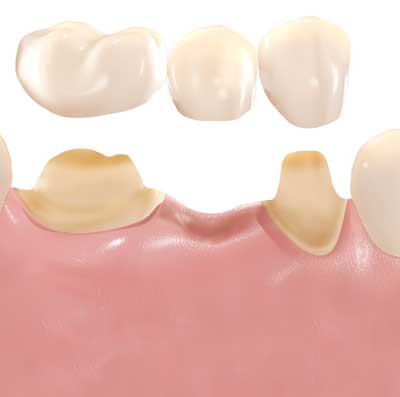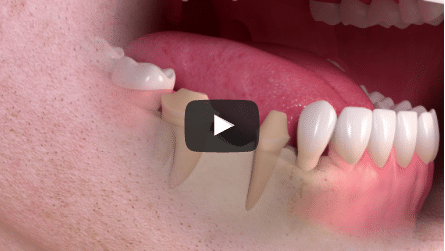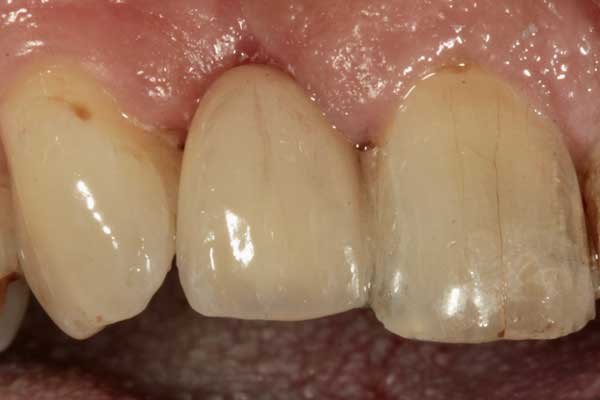Types of Dental Bridges
There are two main types of Dental Bridges: Conventional Bridges and Resin Bonded/Sticky Briges.


Conventional Bridges
Conventional Bridges involves drilling the neighboring teeth to allow them to support a new false tooth in the gap. For example, if one tooth is missing the adjacent two teeth are drilled down and a three-tooth bridge is made to ‘bridge’ the gap. Bridges are fixed and are not removed at night. They don’t move and they can stabilise the bite. The downside is that they are damaging to the adjacent teeth and they can be hard to keep clean. It’s for this reason that we generally prefer Dental Implants (hyperlink) to Bridges, but Conventional Bridges are still useful in certain circumstances, particularly when a patient’s general health makes dental implant unsuitable.
Resin Bonded/Sticky Bridges
Sticky Bridges are tooth replacements that literally ‘stick’ to the back of the neighboring teeth. They’re particularly useful for replacing front teeth. They can look great, but they aren’t always suitable, particularly if you have a heavy bite. We really like this type of bridge in the right circumstances because they don’t damage the adjacent teeth and they’re really simple!
Case 1
This patient had a broken front tooth which wasn’t fixable. We removed the broken tooth and used the natural tooth to make a temporary bridge.

We took Itero scans of the teeth and made a new Sticky Bridge. Fitted the tooth and the patient was delighted with the results.

